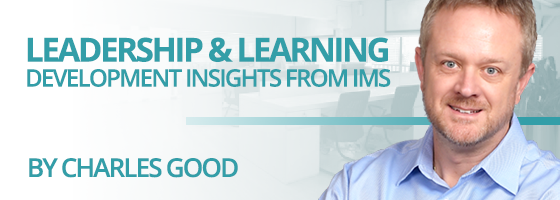In today’s competitive environment, everyone is looking for ways to take their leadership skills to the next level, but which skill should you focus on? Emotional Intelligence? Critical thinking? Time management and productivity? I would argue any list would be incomplete without including leadership presence. In the last few years, this skill has been consistently rated either at the top or close to the top in terms of the most important skill for an effective leader, surpassing technical and functional expertise.
But what is leadership presence? Amy Cuddy, the best-selling author of Presence: Bringing Your Boldest Self to Your Biggest Challenges, acknowledges this difficulty and states, “We know it when we feel it, and we know it when we see it, but presence is hard to define.” I have heard terms such as ‘gravitas’ or ‘wow factor’ being used to define it. While others, like IMS educator Dr. Carol Kinsey Goman, identifies certain qualities that embody leadership presence, such as credibility, confidence, composure, connection, and charisma.
PRESENCE AND NON-VERBAL SIGNALS
Your leadership presence is conveyed by the words you use and the non-verbal signals you send to others. Believe or not, those non-verbal signals represent approximately 55% of your communication with others – over half of the signals you are conveying you are not even saying! Like it or not, leaders are always being evaluated in terms of their credibility and confidence by their peers. Joe Navarro, the best-selling author of What Every Body is Saying, states, “We are always transmitting information.”
Irrespective of where you are in the leadership hierarchy within your organization, improving your non-verbal communication (i.e. body language) will go a long way to improving your leadership presence. Dr. Goman provided some great body language tips during her recent Institute for Management Studies virtual program, a few of which I have provided below.
HEAD TILTING
Tilting your head to one side is a warm signal that you are listening and involved and conveys feelings of empathy and inclusivity.
HAND DISPLAYS
Steepling is a high confidence display involving touching both hands’ fingertips, but hands are not interlocked. This gesture is commonly used for emphasis or if you want to convey an important point.
MIRRORING
We mirror or synchronize our body language and speech characteristics when we feel connected with another person. This mirroring builds trust and rapport because it generates unconscious feelings of affirmation.
LOOKING
Give the amount of eye contact that makes the other person feel comfortable. Lookers gain more credibility than non-lookers.
SMILING
Use a genuine vs. a fake smile. A genuine smile is symmetrical and bilateral that draws the corners of the mouth upward toward the eyes and wrinkles the outer edges of the eyes; whereas, in a fake smile, the mouth stretches sideways, not upward, with little emotion in the eyes.
OPTIMISM
Sometimes called gravity-defying behaviors. These are displayed when you feel optimistic about your circumstances. Two common ones are rocking up and down on the balls of your feet or walking with a bounce in your step.
OTHER LEADERSHIP PRESENCE GUIDELINES
Dr. Goman also provided the following guidelines to improve your accuracy with interpreting the body language of others.
1 – Pay Attention to other people’s body language. Don’t look down or away but stay alert to their nonverbal signals.
2 – Identify a baseline to read body language accurately. If not done, you will likely misinterpret that person’s non-verbal signals. In addition, try to establish this baseline in situations where they are not stressed or feeling pressured, preferably in a relaxed or neutral setting.
3 – Evaluate clusters of gestures such as a group of movements, postures or actions. Try not to assign too much weight to one gesture, but look for a grouping of gestures that support or contradict what they are saying.
4 – Consider the context since there can be multiple interpretations for a gesture. Crossing your arms may mean they are not receptive to what is being shared, or it could mean they are in a cold room and trying to keep warm.
For those interested in learning more about leadership presence and body language, Dr. Goman has several books on these topics, including her most recent best-selling book Stand Out: How to Build Your Leadership Presence.
ABOUT CHARLES GOOD
Charles Good is the president of The Institute for Management Studies, which provides transformational learning experiences that drive behavioral change and develop exceptional leaders. Charles is an innovative and resourceful leader who specializes in bringing people together to develop creative organizational and talent strategies that enable business results. His areas of expertise include assessing organizational skill gaps and leading the design, creation and delivery of high impact, innovative learning solutions that achieve business goals.

1 Comment